Evaluation of the Impact of VR Rural Streetscape Enhancement on Relaxation–Arousal Responses Based on EEG
Abstract
1. Introduction
1.1. Research Background
1.2. Synthesis of Relevant Studies
1.3. Study Purpose
- Examine the subjective perception disparities among individuals before and after the implementation of rural streetscape improvement.
- Investigate the association between transformation components and the relaxation–arousal responses of brain electrodes.
- Analyze the consistency between changes in subjective factors and changes in EEG α/β values.
2. Materials and Methods
2.1. Subject Selection
2.2. Selection of Questionnaire Indexes
2.3. Method
2.4. Experimental Process
2.5. EEG Signal Processing and Statistical Analysis
3. Results
3.1. Questionnaire Results
3.2. Multiple Comparisons of Transformation Scene (T1–T5)
3.3. Differences in the Response of α/β Value to Rural Streetscapes
3.4. Comparative Analysis of Relaxation–Arousal Degree of Pz and T8 Electrodes
3.5. Trend Analysis of Changes in Subjective Scales and α/β Values
4. Discussion
5. Conclusions
Author Contributions
Funding
Institutional Review Board Statement
Informed Consent Statement
Data Availability Statement
Conflicts of Interest
References
- Huang, A.; Liu, B.; Zhang, A.; Zhan, J. Coordinated development of rural habitat in China: A study of measurement, spatio-temporal evolution and convergence. J. Clean. Prod. 2023, 398, 136651. [Google Scholar] [CrossRef]
- Liu, Y.; Li, N. Analysis on the coupling development path of economy and ecological environment under the rural revitalization strategy. Fresenius Env. Bull 2020, 29, 11702–11709. [Google Scholar]
- Lin, S.; Hou, L. SDGs-oriented evaluation of the sustainability of rural human settlement environment in Zhejiang, China. Heliyon 2023, 9, e13492. [Google Scholar] [CrossRef] [PubMed]
- Yuan, Z.; Wen, B.; He, C.; Zhou, J.; Zhou, Z.; Xu, F. Application of multi-criteria decision-making analysis to rural spatial sustainability evaluation: A systematic review. Int. J. Environ. Res. Public Health 2022, 19, 6572. [Google Scholar] [CrossRef]
- Kumar, S.; Valeri, M. Understanding the relationship among factors influencing rural tourism: A hierarchical approach. J. Organ. Change Manag. 2022, 35, 385–407. [Google Scholar] [CrossRef]
- Junqi, M.; Zhang, Y. Quality evaluation of rural human settlements and its influencing factors: Based on the rural settlement data in CLDS. J. Hunan Agric. Univ. (Soc. Sci.) 2020, 21, 45–52+74. (In Chinese) [Google Scholar] [CrossRef]
- Tu, S.; Long, H.; Zhang, Y.; Ge, D.; Qu, Y. Rural restructuring at village level under rapid urbanization in metropolitan suburbs of China and its implications for innovations in land use policy. Habitat Int. 2018, 77, 143–152. [Google Scholar] [CrossRef]
- Liu, D.; Gong, Q. Promoting Farmers’ Participation in Rural Settlement Environment Improvement Programmes: Evidence from China. Int. J. Environ. Res. Public Health 2022, 19, 8585. [Google Scholar] [CrossRef]
- Tang, J.; Xu, Y.; Ma, W.; Gao, S. Does participation in poverty alleviation programmes increase subjective well-being? Results from a survey of rural residents in Shanxi, China. Habitat Int. 2021, 118, 102455. [Google Scholar] [CrossRef]
- Evans, G.W.; McCoy, J.M. When buildings don’t work: The role of architecture in human health. J. Environ. Psychol. 1998, 18, 85–94. [Google Scholar] [CrossRef]
- Homjia, M.; Maghool, S.A.H.; Schnabel, M.A. The impact of moving through the built environment on emotional and neurophysiological state—A systematic literature review. In Proceedings of the 25th CAADRIA Conference, Bangkok, Thailand, 5–6 August 2020. [Google Scholar]
- Kim, J.; Kim, N. Quantifying emotions in architectural environments using biometrics. Appl. Sci. 2022, 12, 9998. [Google Scholar] [CrossRef]
- Banaei, M.; Hatami, J.; Yazdanfar, A.; Gramann, K. Walking through architectural spaces: The impact of interior forms on human brain dynamics. Front. Hum. Neurosci. 2017, 11, 477. [Google Scholar] [CrossRef] [PubMed]
- Yin, J.; Arfaei, N.; MacNaughton, P.; Catalano, P.J.; Allen, J.G.; Spengler, J.D. Effects of biophilic interventions in office on stress reaction and cognitive function: A randomized crossover study in virtual reality. Indoor Air 2019, 29, 1028–1039. [Google Scholar] [CrossRef] [PubMed]
- Tuszyńska-Bogucka, W.; Kwiatkowski, B.; Chmielewska, M.; Dzieńkowski, M.; Kocki, W.; Pełka, J.; Przesmycka, N.; Bogucki, J.; Galkowski, D. The effects of interior design on wellness–Eye tracking analysis in determining emotional experience of architectural space. A survey on a group of volunteers from the Lublin Region, Eastern Poland. Ann. Agric. Environ. Med. 2020, 27, 113–122. [Google Scholar] [CrossRef] [PubMed]
- Zhang, Z.; Zhuo, K.; Wei, W.; Li, F.; Yin, J.; Xu, L. Emotional responses to the visual patterns of urban streets: Evidence from physiological and subjective indicators. Int. J. Environ. Res. Public Health 2021, 18, 9677. [Google Scholar] [CrossRef] [PubMed]
- Harvey, C.; Aultman-Hall, L.; Hurley, S.E.; Troy, A. Effects of skeletal streetscape design on perceived safety. Landsc. Urban Plan. 2015, 142, 18–28. [Google Scholar] [CrossRef]
- Kawshalya, L.; Weerasinghe, U.; Chandrasekara, D. The impact of visual complexity on perceived safety and comfort of the users: A study on urban streetscape of Sri Lanka. PLoS ONE 2022, 17, e0272074. [Google Scholar] [CrossRef] [PubMed]
- Gjerde, M. Street Perceptions: A Study of Visual Preferences for New Zealand Streetscapes. Ph.D. Thesis, Norwegian University, Trondheim, Norway, 2015. [Google Scholar]
- Campos, M.; Velázquez, A.; Verdinelli, G.B.; Priego-Santander, Á.G.; McCall, M.K.; Boada, M. Rural people’s knowledge and perception of landscape: A case study from the Mexican Pacific Coast. Soc. Nat. Resour. 2012, 25, 759–774. [Google Scholar] [CrossRef]
- Nejad, M.; Sharghi, A.; Asadpour, F. Investigating the Indicators and Subjective Patterns of the Majority of Experts in People’s Visual Perception of the Rural Environment Appearance. J. Rural Res. 2020, 11, 422–439. [Google Scholar]
- Guo, Y.; Chen, P.; Zhang, H.; Jiang, Z. Evaluation of the Perception and Experience of Rural Natural Landscape among Youth Groups: An Empirical Analysis from Three Villages around Hefei. Sustainability 2022, 14, 16298. [Google Scholar] [CrossRef]
- Liu, F.; Kang, J. Relationship between street scale and subjective assessment of audio-visual environment comfort based on 3D virtual reality and dual-channel acoustic tests. Build. Environ. 2018, 129, 35–45. [Google Scholar] [CrossRef]
- Tabrizian, P.; Baran, P.K.; Smith, W.R.; Meentemeyer, R.K. Exploring perceived restoration potential of urban green enclosure through immersive virtual environments. J. Environ. Psychol. 2018, 55, 99–109. [Google Scholar] [CrossRef]
- Tilley, S.; Neale, C.; Patuano, A.; Cinderby, S. Older people’s experiences of mobility and mood in an urban environment: A mixed methods approach using electroencephalography (EEG) and interviews. Int. J. Environ. Res. Public Health 2017, 14, 151. [Google Scholar] [CrossRef] [PubMed]
- Gao, T.; Zhang, T.; Zhu, L.; Gao, Y.; Qiu, L. Exploring psychophysiological restoration and individual preference in the different environments based on virtual reality. Int. J. Environ. Res. Public Health 2019, 16, 3102. [Google Scholar] [CrossRef] [PubMed]
- Kim, S.; Park, H.; Choo, S. Effects of Changes to Architectural Elements on Human Relaxation-Arousal Responses: Based on VR and EEG. Int. J. Environ. Res. Public Health 2021, 18, 4305. [Google Scholar] [CrossRef]
- Karakas, T.; Yildiz, D. Exploring the influence of the built environment on human experience through a neuroscience approach: A systematic review. Front. Archit. Res. 2020, 9, 236–247. [Google Scholar] [CrossRef]
- Wen, T.Y.; Aris, S.M. Electroencephalogram (EEG) stress analysis on alpha/beta ratio and theta/beta ratio. Indones. J. Electr. Eng. Comput. Sci 2020, 17, 175–182. [Google Scholar]
- Tiago-Costa, E.; Quelhas-Costa, E.; Santos-Baptista, J. Cambios en la amplitud del EEG (Ondas Alfa y Beta) con el medio ambiente térmico. Dyna 2016, 83, 87. [Google Scholar] [CrossRef]
- Griffiths, B.J.; Mayhew, S.D.; Mullinger, K.J.; Jorge, J.; Charest, I.; Wimber, M.; Hanslmayr, S. Alpha/beta power decreases track the fidelity of stimulus-specific information. eLife 2019, 8, e49562. [Google Scholar] [CrossRef]
- Schreyer, A.C. Architectural Design with SketchUp: 3D Modeling, Extensions, BIM, Rendering, Making, and Scripting; John Wiley & Sons: Hoboken, NJ, USA, 2015. [Google Scholar]
- Mehta, V. Evaluating public space. J. Urban Des. 2014, 19, 53–88. [Google Scholar] [CrossRef]
- Zamanifard, H.; Alizadeh, T.; Bosman, C.; Coiacetto, E. Measuring experiential qualities of urban public spaces: Users’ perspective. J. Urban Des. 2019, 24, 340–364. [Google Scholar] [CrossRef]
- Alotaiby, T.; El-Samie, F.E.A.; Alshebeili, S.A.; Ahmad, I. A review of channel selection algorithms for EEG signal processing. EURASIP J. Adv. Signal Process. 2015, 2015, 66. [Google Scholar] [CrossRef]
- Boonyakitanont, P.; Lek-Uthai, A.; Chomtho, K.; Songsiri, J. A review of feature extraction and performance evaluation in epileptic seizure detection using EEG. Biomed. Signal Process. Control 2020, 57, 101702. [Google Scholar] [CrossRef]
- Shimokawa, K.; Sugimori, E. Using virtual reality to study subjective time in crowded versus uncrowded environments. Percept. Mot. Ski. 2019, 126, 737–752. [Google Scholar] [CrossRef] [PubMed]
- Billings, J.; Tivadar, R.; Murray, M.M.; Franceschiello, B.; Petri, G. Topological Features of Electroencephalography are Robust to Re-referencing and Preprocessing. Brain Topogr. 2022, 35, 79–95. [Google Scholar] [CrossRef] [PubMed]
- Desjardins, J.A.; van Noordt, S.; Huberty, S.; Segalowitz, S.J.; Elsabbagh, M. EEG Integrated Platform Lossless (EEG-IP-L) pre-processing pipeline for objective signal quality assessment incorporating data annotation and blind source separation. J. Neurosci. Methods 2021, 347, 108961. [Google Scholar] [CrossRef] [PubMed]
- Berryhill, M.E.; Olson, I.R. The right parietal lobe is critical for visual working memory. Neuropsychologia 2008, 46, 1767–1774. [Google Scholar] [CrossRef]
- Jiang, B.; Chang, C.-Y.; Sullivan, W.C. A dose of nature: Tree cover, stress reduction, and gender differences. Landsc. Urban Plan. 2014, 132, 26–36. [Google Scholar] [CrossRef]
- Behrmann, M.; Lee, A.; Geskin, J.; Graham, K.S.; Barense, M. Temporal lobe contribution to perceptual function: A tale of three patient groups. Neuropsychologia 2016, 90, 33–45. [Google Scholar] [CrossRef] [PubMed]
- Vecchiato, G.; Tieri, G.; Jelic, A.; De Matteis, F.; Maglione, A.G.; Babiloni, F. Electroencephalographic correlates of sensorimotor integration and embodiment during the appreciation of virtual architectural environments. Front. Psychol. 2015, 6, 1944. [Google Scholar] [CrossRef]
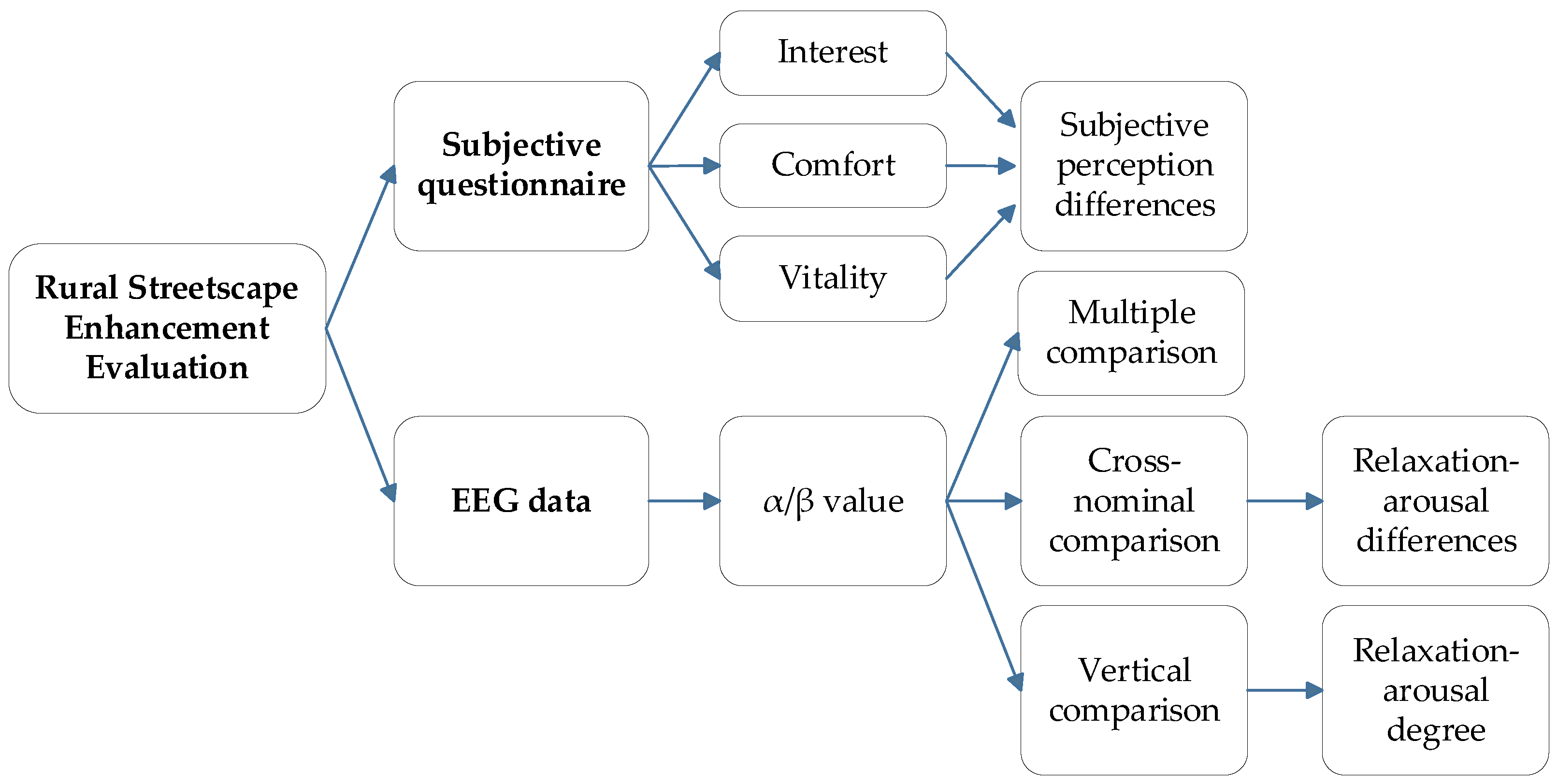
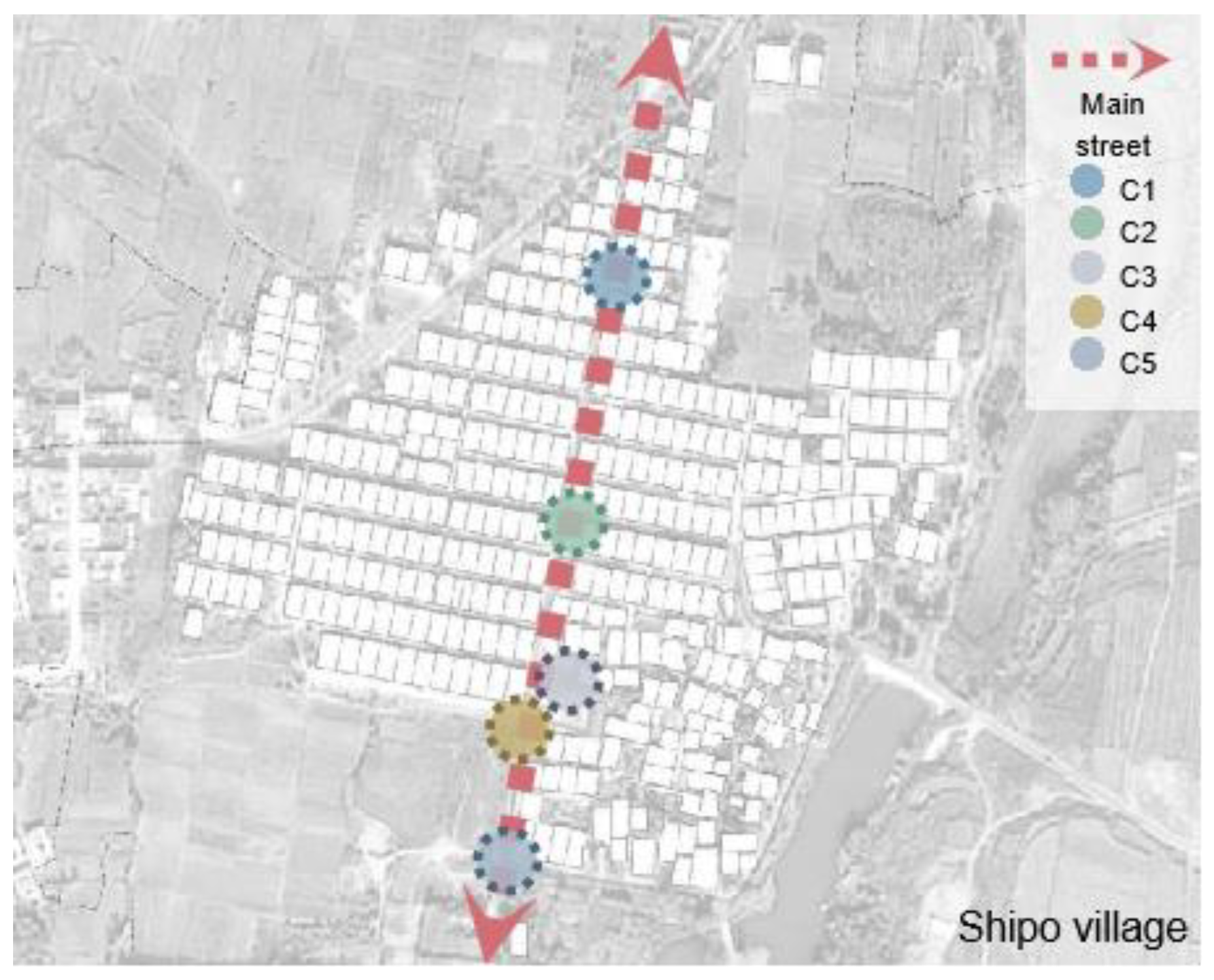
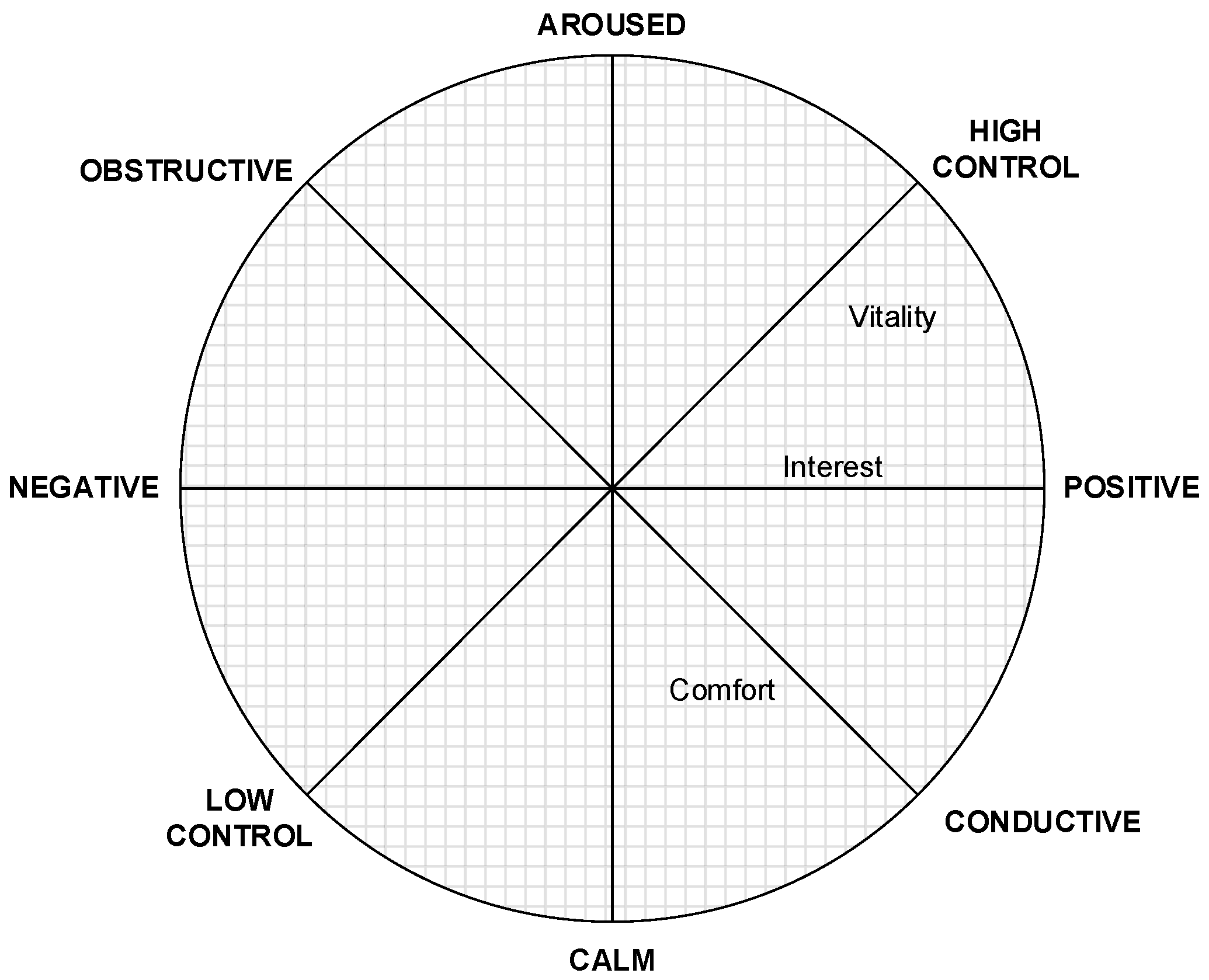

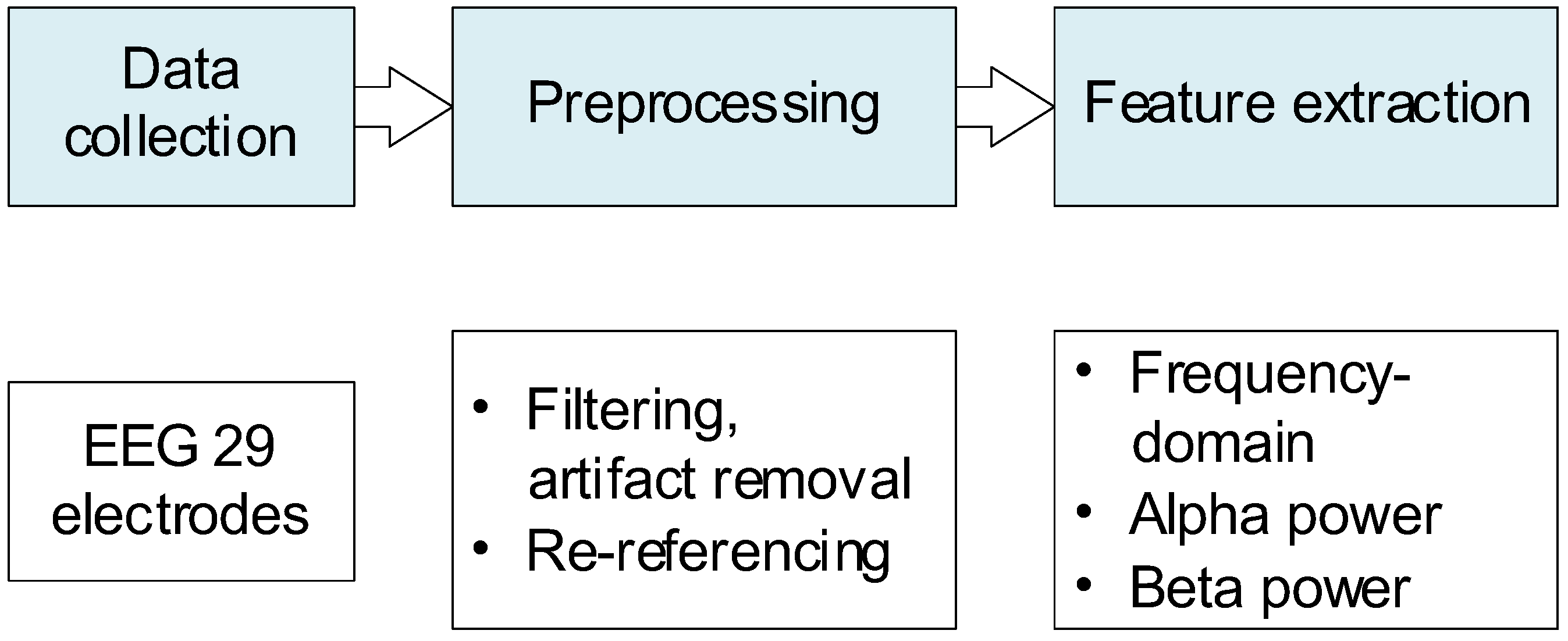
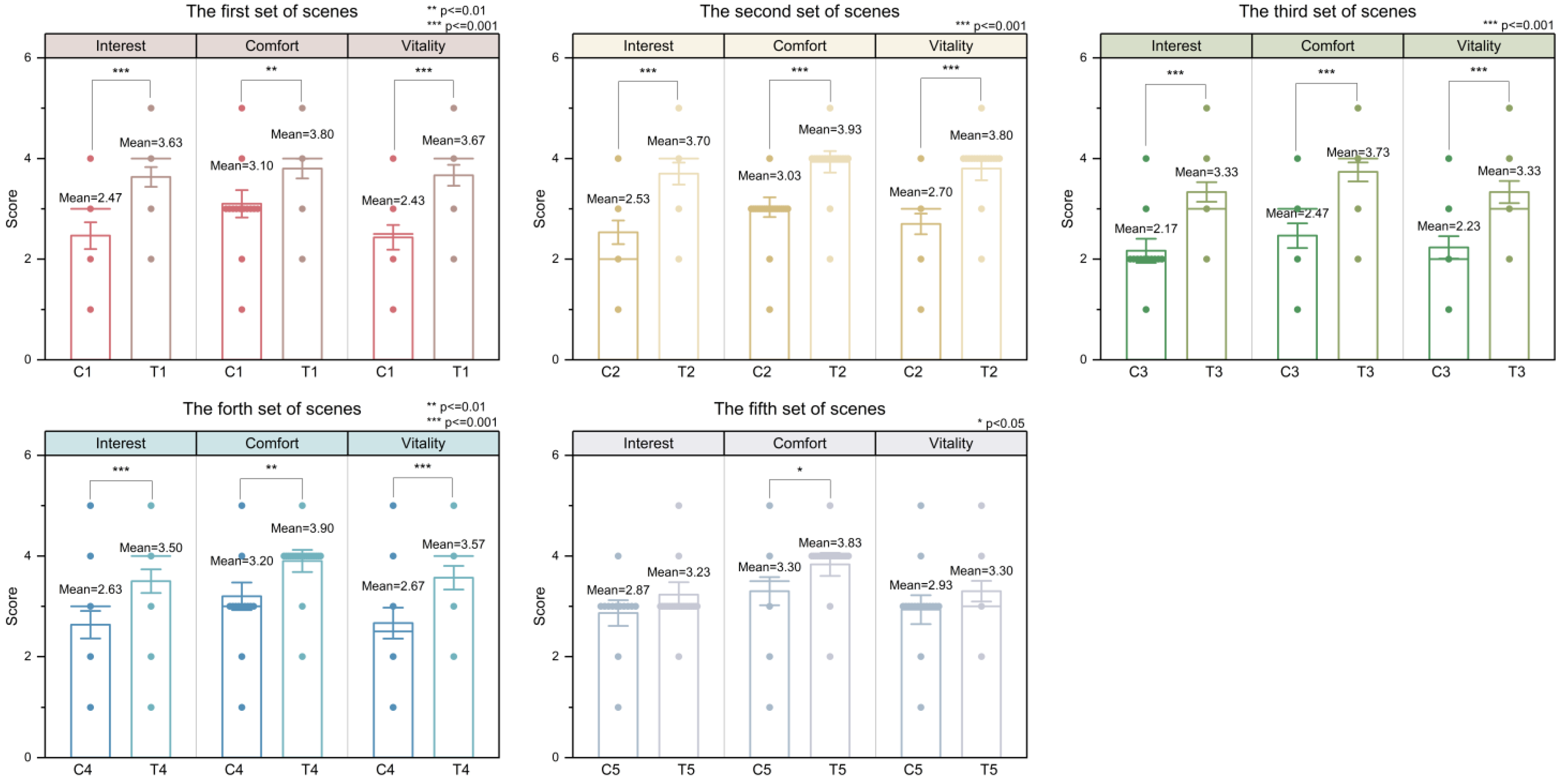
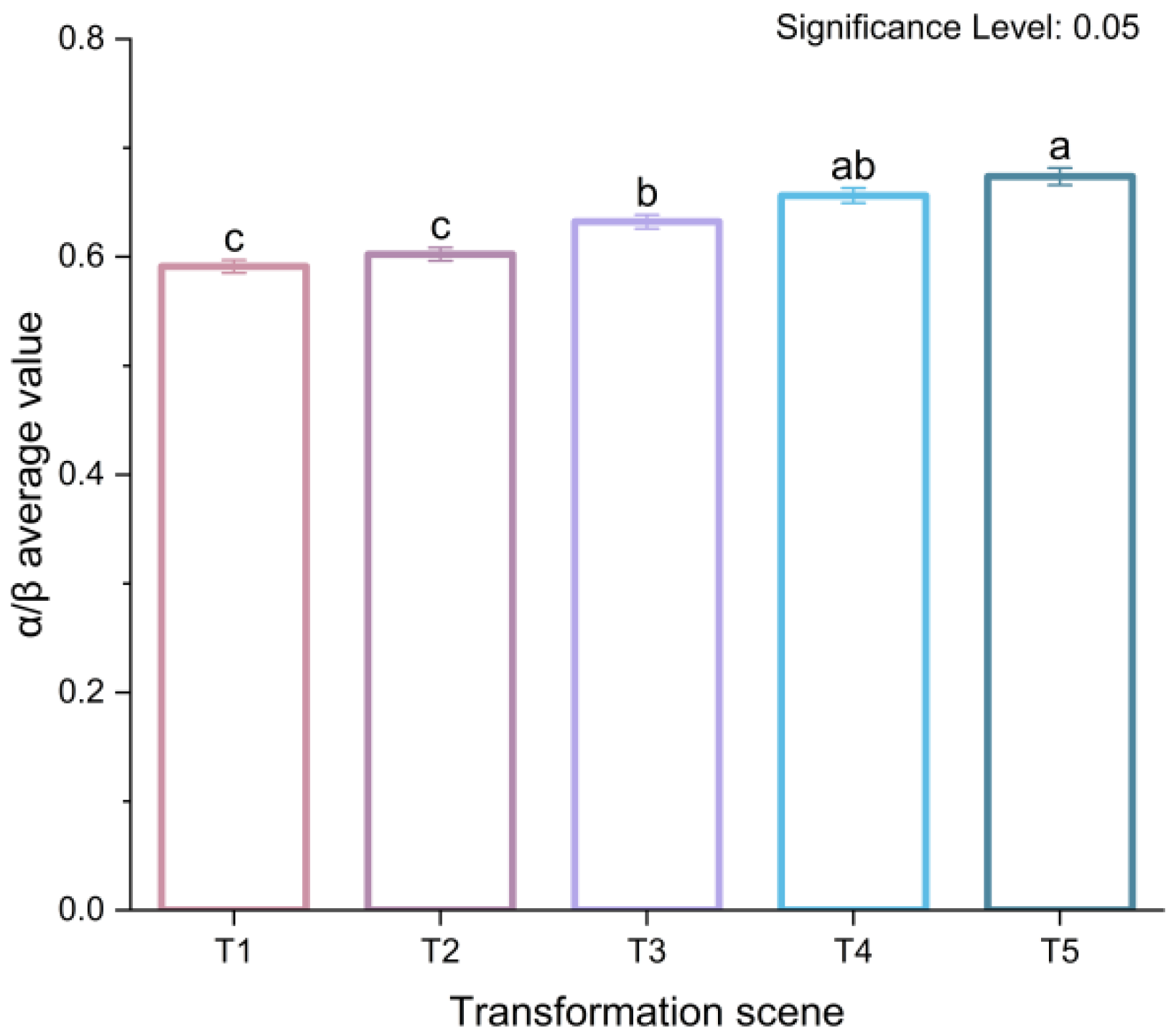
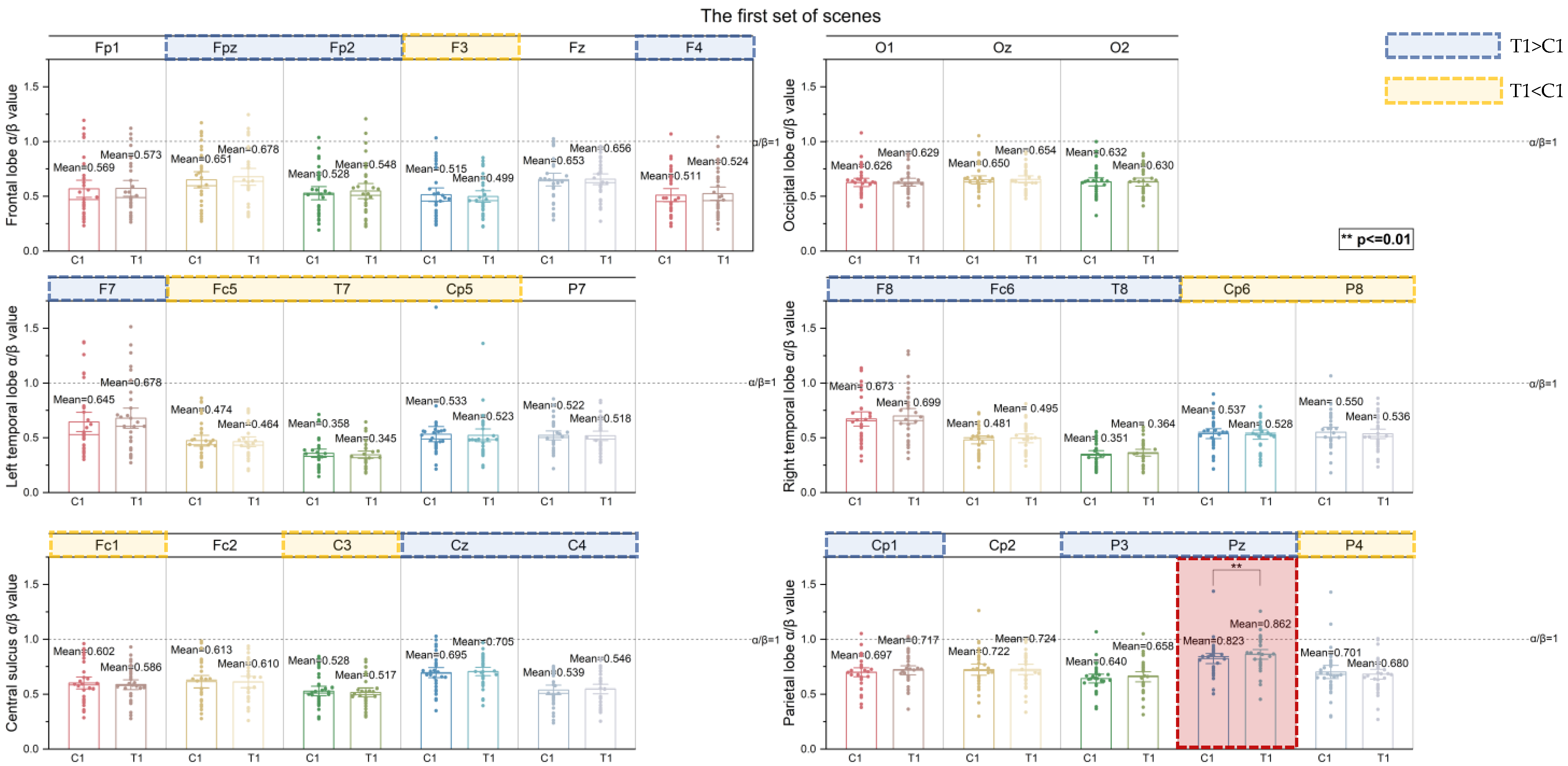
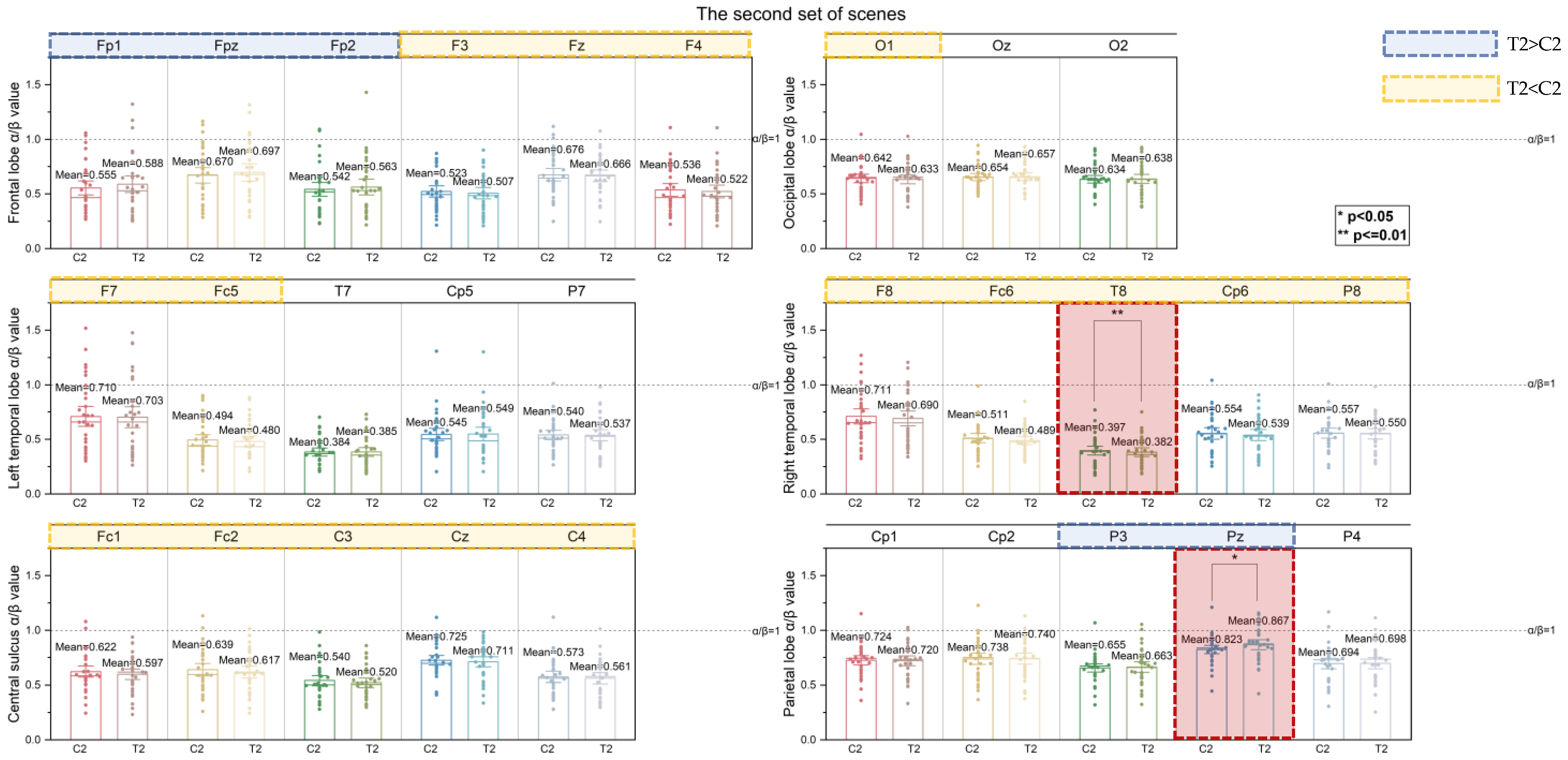

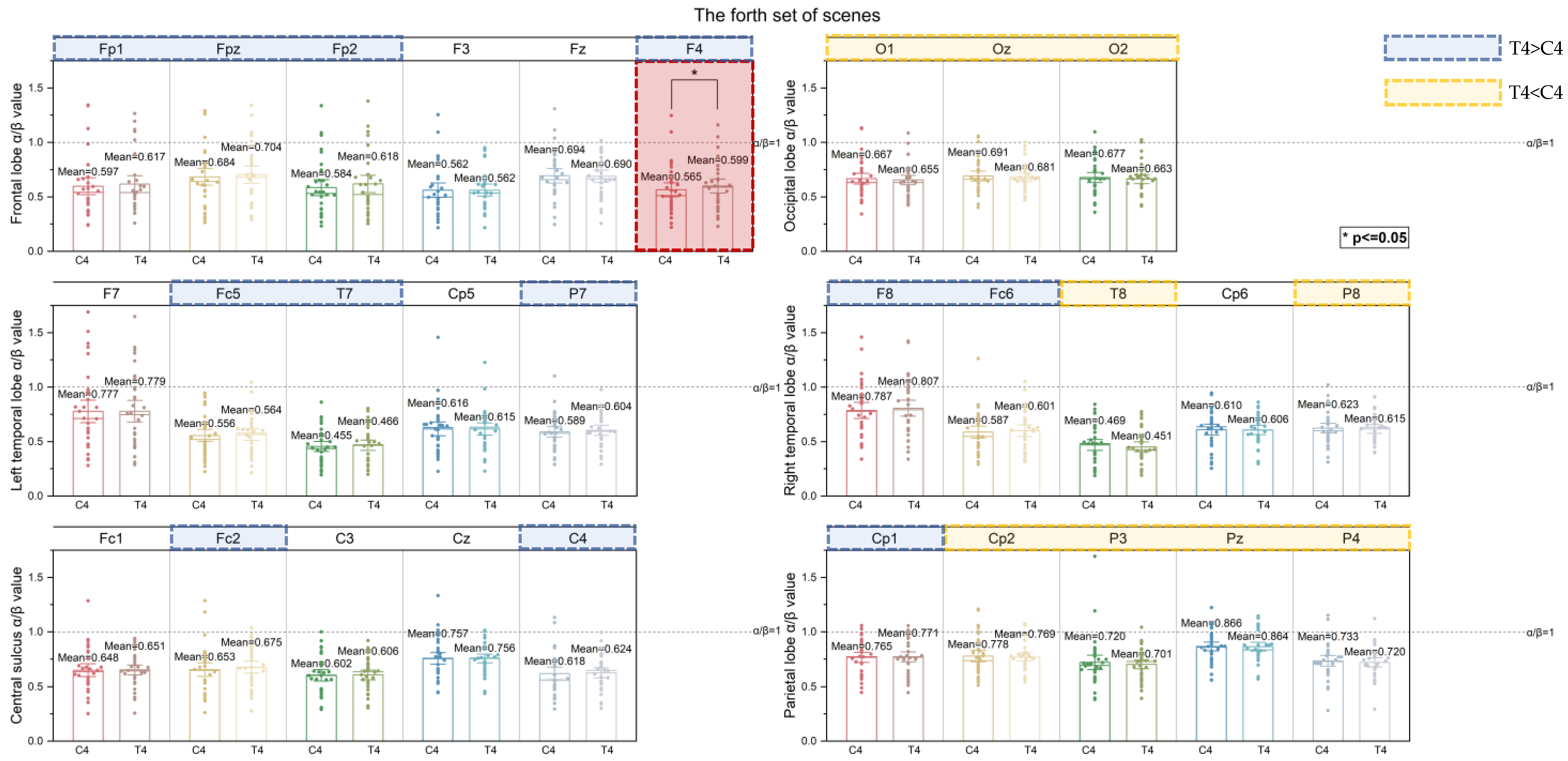
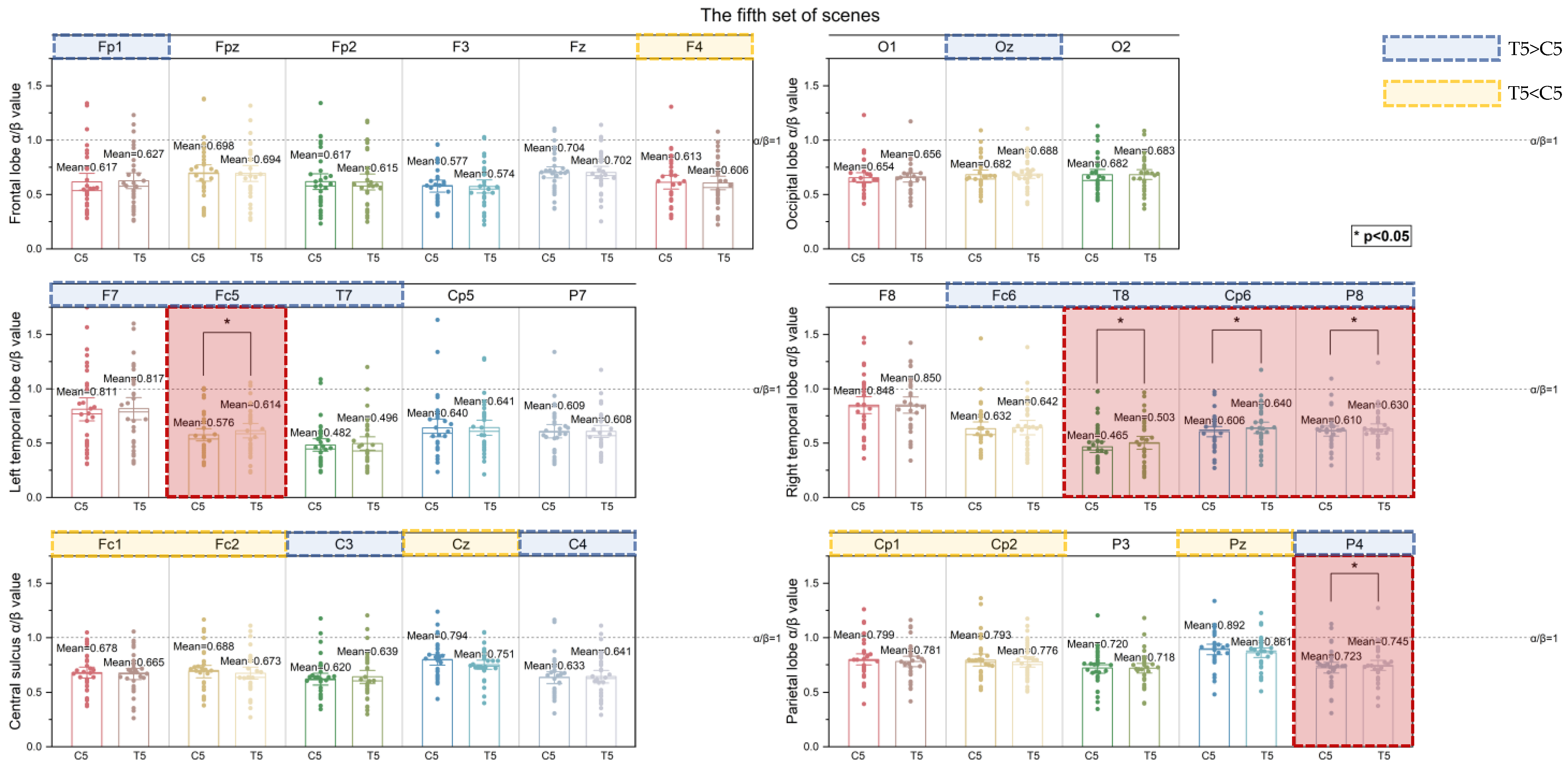
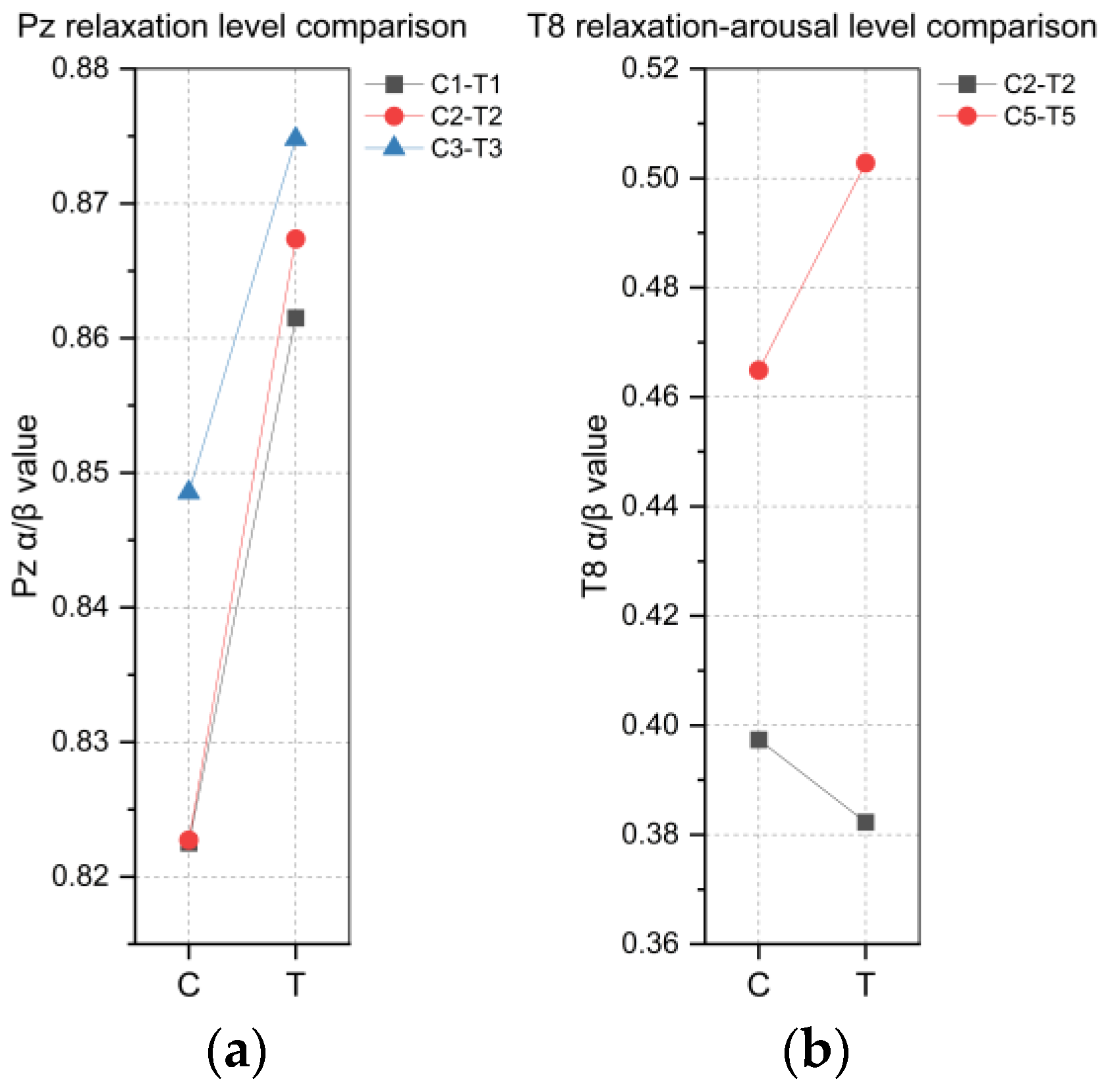
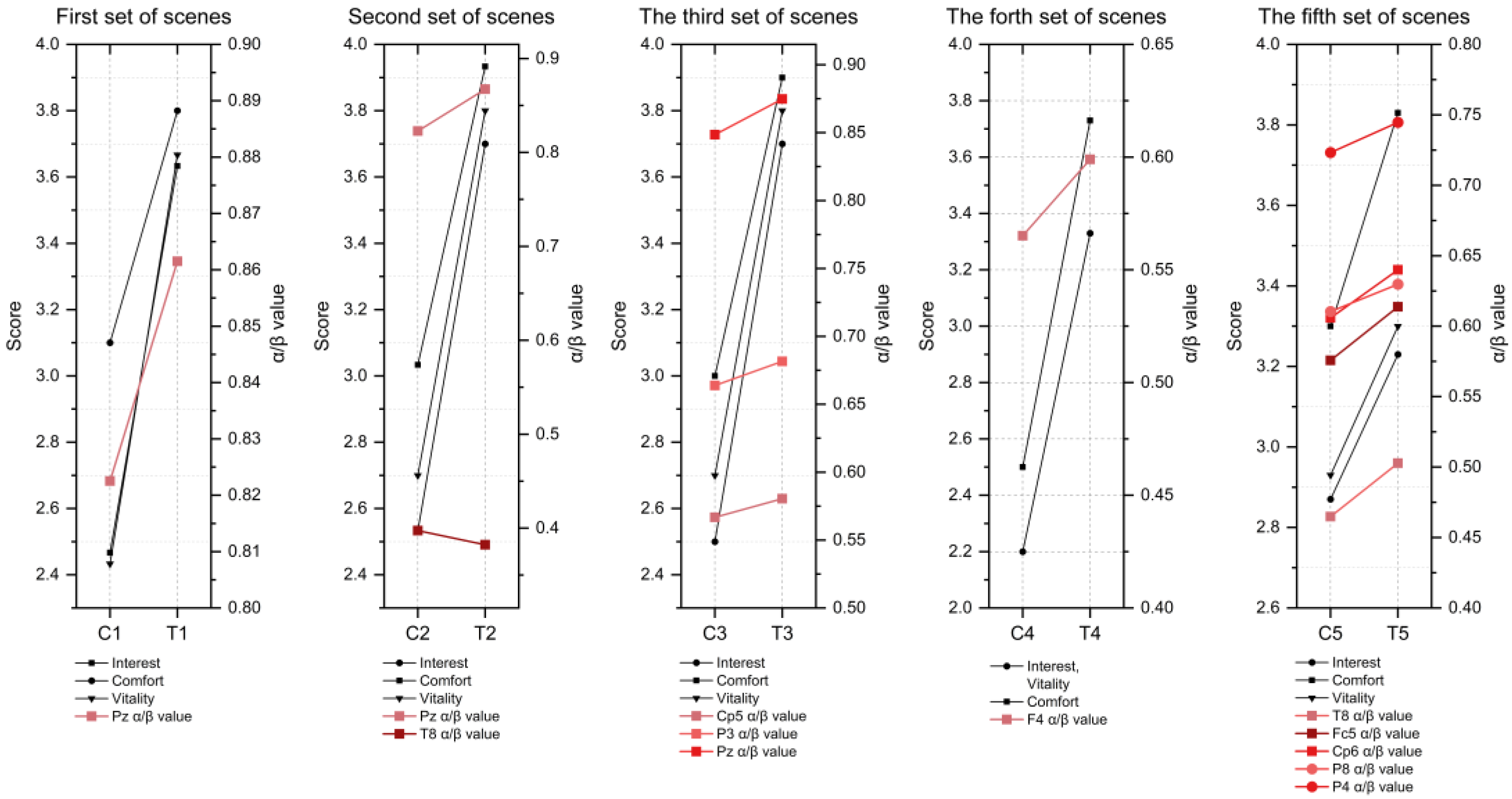
| Current Scenes | Transformation Scenes | |
|---|---|---|
| The first set of scenes | 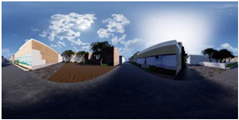 | 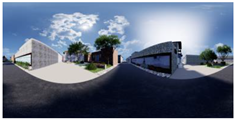 |
| C1 | T1 | |
| The second set of scenes |  |  |
| C2 | T2 | |
| The third set of scenes |  | 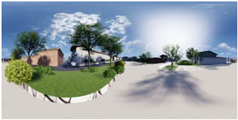 |
| C3 | T3 | |
| The fourth set of scenes | 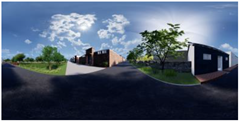 | 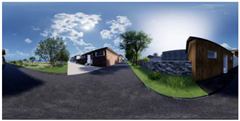 |
| C4 | T4 | |
| The fifth set of scenes | 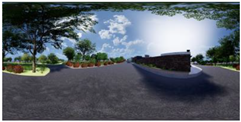 | 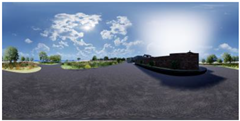 |
| C5 | T5 |
| Item | Details | Frequency | % |
|---|---|---|---|
| Gender | Male | 12 | 40 |
| Female | 18 | 60 | |
| Age | 20–25 | 24 | 80 |
| 26–30 | 6 | 20 | |
| Education background | Undergraduate | 2 | 6.67 |
| Master | 28 | 93.33 |
Disclaimer/Publisher’s Note: The statements, opinions and data contained in all publications are solely those of the individual author(s) and contributor(s) and not of MDPI and/or the editor(s). MDPI and/or the editor(s) disclaim responsibility for any injury to people or property resulting from any ideas, methods, instructions or products referred to in the content. |
© 2024 by the authors. Licensee MDPI, Basel, Switzerland. This article is an open access article distributed under the terms and conditions of the Creative Commons Attribution (CC BY) license (https://creativecommons.org/licenses/by/4.0/).
Share and Cite
Ren, H.; Wang, Y.; Zhang, J.; Zheng, Z.; Wang, Q. Evaluation of the Impact of VR Rural Streetscape Enhancement on Relaxation–Arousal Responses Based on EEG. Appl. Sci. 2024, 14, 2996. https://doi.org/10.3390/app14072996
Ren H, Wang Y, Zhang J, Zheng Z, Wang Q. Evaluation of the Impact of VR Rural Streetscape Enhancement on Relaxation–Arousal Responses Based on EEG. Applied Sciences. 2024; 14(7):2996. https://doi.org/10.3390/app14072996
Chicago/Turabian StyleRen, Hongguo, Yujun Wang, Jing Zhang, Ziming Zheng, and Qingqin Wang. 2024. "Evaluation of the Impact of VR Rural Streetscape Enhancement on Relaxation–Arousal Responses Based on EEG" Applied Sciences 14, no. 7: 2996. https://doi.org/10.3390/app14072996
APA StyleRen, H., Wang, Y., Zhang, J., Zheng, Z., & Wang, Q. (2024). Evaluation of the Impact of VR Rural Streetscape Enhancement on Relaxation–Arousal Responses Based on EEG. Applied Sciences, 14(7), 2996. https://doi.org/10.3390/app14072996







